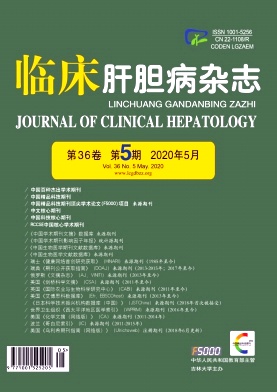|
[1] CICHOZ·-LACH H, MICHALAK A. Oxidative stress as a crucial factor in liver diseases[J]. World J Gastroenterol, 2014,20(25):8082-8091.
|
|
[2] LEE J, GIORDANO S, ZHANG J. Autophagy, mitochondria and oxidative stress:Cross-talk and redox signalling[J].Biochem J, 2012, 441(2):523-540.
|
|
[3] LU Q, JIANG MH, JIANG JG, et al. Isolation and identification of compounds from penthorum chinense pursh with antioxidant and antihepatocarcinoma properties[J]. J Agr Food Chem,2012, 60(44):11097-11103.
|
|
[4] WANG X, YUE LL, LI CK, et al. Selaginella plant flavonoids and its effect on immunity[J]. J Changchun Univ Chin Med,2018, 34(1):46-48.(in Chinese)汪晓,岳乐乐,李驰坤,等.卷柏属植物黄酮类成分及其对机体免疫的影响[J].长春中医药大学学报,2018, 34(1):46-48.
|
|
[5] LI F, LANG F, ZHANG H, et al. Apigenin alleviates endotoxininduced myocardial toxicity by modulating inflammation, oxidative stress, and autophagy[J]. Oxid Med Cell Longev, 2017, 2017:2302896.
|
|
[6] SUNG B, CHUNG HY, KIM ND. Role of apigenin in cancer prevention via the induction of apoptosis and autophagy[J]. J Cancer Prev, 2016, 21(4):216-226.
|
|
[7] VENIGALLA M, GYENGESI E, MÜNCH G. Curcumin and Apigenin-novel and promising therapeutics against chronic neuroinflammation in Alzheimer's disease[J]. Neural Regen Res,2015, 10(8):1181-1185.
|
|
[8] LEYVA-LÓPEZ N, GUTIERREZ-GRIJALVA EP, AMBRIZPEREZ DL, et al. Flavonoids as cytokine modulators:a possible therapy for inflammation-related diseases[J]. Int J Mol Sci, 2016, 17(6):921.
|
|
[9] COLLIN F. Chemical basis of reactive oxygen species reactivity and involvement in neurodegenerative diseases[J]. Int J Mol Sci, 2019, 20(10):2407.
|
|
[10] DICKINSON BC, CHANG CJ. Chemistry and biology of reactive oxygen species in signaling or stress responses[J]. Nat Chem Biol, 2011, 7(8):504-511.
|
|
[11] BROUWER M, BROUWER TH, GRATER W, et al. The paradigm that all oxygen-respiring eukaryotes have cytosolic CuZn-superoxide dismutase and that Mn-superoxide dismutase is localized to the mitochondria does not apply to a large group of marine arthropods[J]. Biochemistry, 1997, 36(43):13381-13388.
|
|
[12] AYALA A, MUÑOZ MF, ARGÜELLES S. Lipid peroxidation:Production, metabolism, and signaling mechanisms of malondialdehyde and 4-hydroxy-2-nonenal[J]. Oxid Med Cell Longev, 2014, 2014:360438.
|
|
[13] ZARE M, RAKHSHAN K, ABOUTALEB N, et al. Apigenin attenuates doxorubicin induced cardiotoxicity via reducing oxidative stress and apoptosis in male rats[J]. Life Sci, 2019,232:116623.
|
|
[14] HUANG H, LAI S, LUO Y, et al. Nutritional preconditioning of apigenin alleviates myocardial ischemia/reperfusion injury via the mitochondrial pathway mediated by notch1/hes1[J]. Oxid Med Cell Longev, 2019, 2019:7973098.
|
|
[15] SANG Y, ZHANG F, WANG H, et al. Apigenin exhibits protective effects in a mouse model of D-galactose-induced aging via activating the Nrf2 pathway[J]. Food Funct, 2017,8(6):2331-2340.
|
|
[16] LAVRIK IN. Systems biology of apoptosis signaling networks[J]. Curr Opin Biotechnol, 2010, 21(4):551-555.
|
|
[17] JIN Z, EL-DEIRY WS. Overview of cell death signaling pathways[J]. Cancer Biol Ther, 2005, 4(2):147-171.
|
|
[18] FU Q, DUAN X, YAN S, et al. Bioluminescence imaging of caspase-3 activity in mouse liver[J]. Apoptosis, 2013, 18(8):998-1007.
|
|
[19] DUARTE S, ARANGO D, PARIHAR A, et al. Apigenin protects endothelial cells from lipopolysaccharide(lps)-induced inflammation by decreasing caspase-3 activation and modulating mitochondrial function[J]. Int J Mol Sci, 2013, 14(9):17664-17679.
|







 DownLoad:
DownLoad: